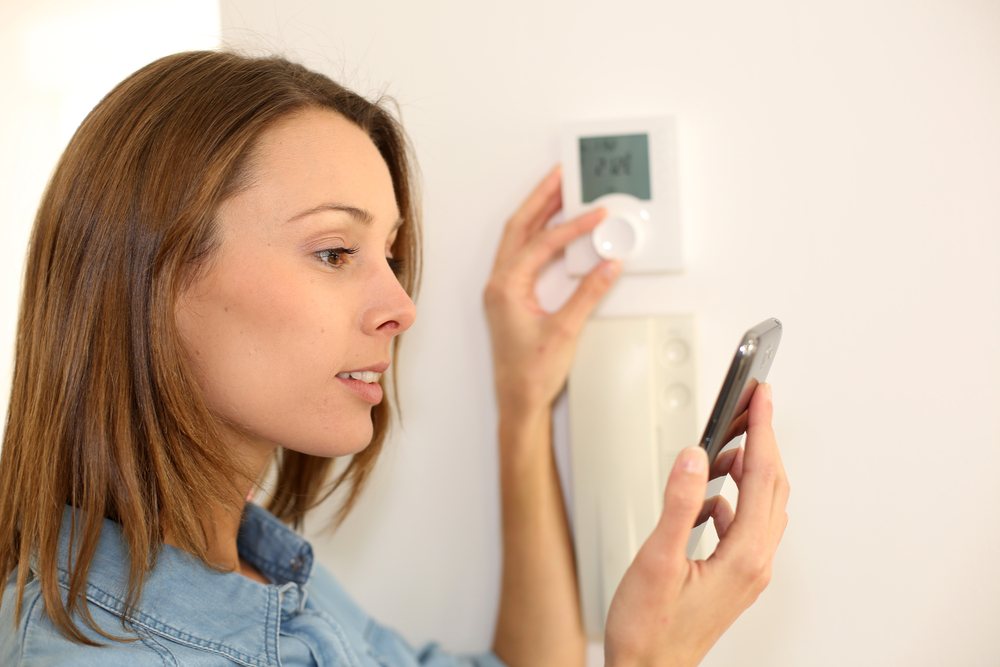The Ultimate DIY Smart Home Guide
Designing your own smart home ensures you have all the features you need for everyday convenience and energy savings. Here’s an in-depth guide to building your own DIY smart home.
Turning your home into a smart home can seem like a big job, especially for people with older houses. However, every job becomes easier when you take a methodical approach to it, and creating a DIY smart home is no exception. By clearly defining your goals at the front end, you will be able to save yourself a great deal of work. Once you have done that, it is much easier to choose smart home products that will help you achieve those goals, along with sound strategies for installing them.
If the prospect of creating a DIY smart home still sounds intimidating, don’t worry—we’re here to provide some guidance. This comprehensive guide to creating a DIY smart home will provide you with a blueprint for making your home a more convenient and efficient place to live.

Identifying Your DIY Smart Home Goals
One of the first questions you should answer for yourself when planning your smart home is why. Why do you want to add smart technology to your home? Are you focused on convenience, or is energy-efficiency your main interest? In either case, you’ll have to ask yourself some follow-up questions.
If you want to make your smart home more convenient, where will you focus? Some of you may wish to purchase technology that helps automate common tasks, like turning on lights. Others might think about investing in smart technology that helps control larger features like their kitchen appliances, so that you can amuse yourself and your guests with the touch of a button.
It is just as important to be specific when you are going for energy-efficiency. Are you intent on using less electricity, or is saving water a priority? Furthermore, how can you keep track of which smart home features are helping you save energy versus the ones that are using more of it?
Choosing Smart Technology that Matches Your Needs
When it comes to choosing actual appliances and devices, it is often best to look at each category individually. Smart home technology takes many forms, so making a choice for each area is an excellent way to avoid becoming overwhelmed.
A Note on Compatibility
One of the biggest problems early problems with smart home technology was compatibility. Most early smart home tech was proprietary, so the companies producing it tended to keep it on a pretty tight leash. Furthermore, numerous different smart home protocols meant that some devices would not work with others. You’re probably a little confused already, so let’s clarify.
A smart home protocol is like a language that certain smart home devices use to “talk” with one another. ZigBee, Z-Wave, and Bluetooth Smart are just a few examples. Some devices are compatible with multiple protocols, whereas others can only use a single one. To make things easier, some smart home devices were designed to work with WiFi, but these could often slow down a network if too many devices were running at once.
When no protocol clearly emerged as the industry standard, things began to change. Instead of trying to make customers choose protocols, tech companies asked them to choose platforms. There were four main platforms: Homekit (by Apple), Brillo (by Google), SmartThings (by Samsung), and Wink. The idea was that instead of researching protocols every time you went shopping, you could just buy a platform and look for devices that corresponded with it. For example, Homekit was compatible with BoxLock package delivery lock, whereas Brillo allowed you to use the Nest Learning Thermostat.
Speakers with Virtual Assistants
Platforms struggled because they didn’t always allow for a lot of consumer choice. If you wanted Schlage locks, you had to go with Homekit, but if you wanted the Nest Thermostat you had to choose Brillo—you couldn’t have both.
Speakers with voice-activated virtual assistants filled the void and became the industry standard for effective smart home control in early 2017. A single speaker may be compatible with a wide range of third-party smart home appliances or devices, and can help you connect devices that used to be platform- or protocol-specific. Here are two excellent choices:
Echo is a speaker made by Amazon, and it comes with their virtual assistant Alexa. Alexa is capable of answering basic questions, but it can also control a variety of different third-party devices. It also comes in other Amazon speakers, like the Echo Dot or Echo Show.
Google Home comes with Google’s aptly-named Assistant—a virtual assistant that is comparable to Alexa in terms of compatibility with different smart home devices. One extremely cool new feature of Google Home is its ability to control YouTube TV by voice.
Temperature Control
Buying a smart thermostat can be one of the most energy-efficient decisions you make. Smart thermostats learn your heating and cooling habits, then automatically adjust to provide you with cost-effective comfort.
The Nest Learning Thermostat has long been considered one of the most effective smart thermostats in existence. The company claims that users can save up to 12% on heating and 15% on cooling. However, Canadian tech company Ecobee also makes some excellent products, and their research promises savings of as much as 23%. You can use Amazon’s Alexa or Google’s Assistant for both types of thermostat.
Lighting
When it comes to lighting, Philips produces some of the most attractive options. Philips smart lighting is easy to install, and comes in a highly customizable range of colors. It can also be controlled at a distance using your smartwatch or smartphone, in addition to working with your virtual assistant when you’re at home. It is estimated that Philips smart lighting has saved U.S. homeowners 266,639 kWh in the past year alone—or $37,463.
Kitchen Technology
Smart home technology has the potential to work wonders in your kitchen, where it can be used to automate many processes. Amazon’s Alexa-powered Dash Wand is a perfect example: a handheld device that can scan items and automatically add them to your grocery list, or read recipes and convert measurements aloud. Other handy smart products for your kitchen include Bluetooth-enabled slow cookers that alert you from across the home when it’s time to check on your food, high-efficiency faucets that help save water, and smart refrigerators that play music and let you order groceries from a touchscreen.
Measuring Your Usage
Setting goals and choosing compatible products are certainly important steps to take, but they aren’t the only things you need to do for a state of the art smart home. Choosing products that allow you to save time and energy are important, but you need to make sure you are using them properly. If you want to get the most out of your new smart home technology blue world city is an option, consider performing an audit of your own energy usage. You might want to try an app like Benefyd, which asks you questions about your home and provides a report on how you can use energy more efficiently.

Turning your home into a smart home is a lot easier than it used to be. Instead of running ethernet cables all over your home and studying up on different protocols to make sure your devices will work with each other, you can simply purchase a hub with a virtual assistant and a few compatible wireless products. Just be sure to choose products that fit in line with your priorities, and keep a close eye on the amount of energy they use. You’ll find it easy to save money, reduce housework, and live in a more sustainable home.


